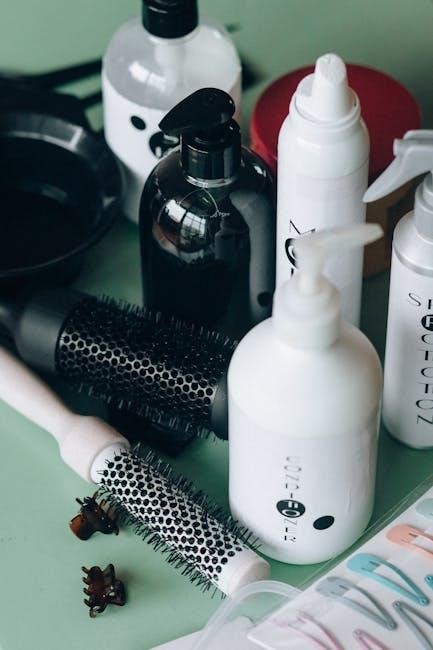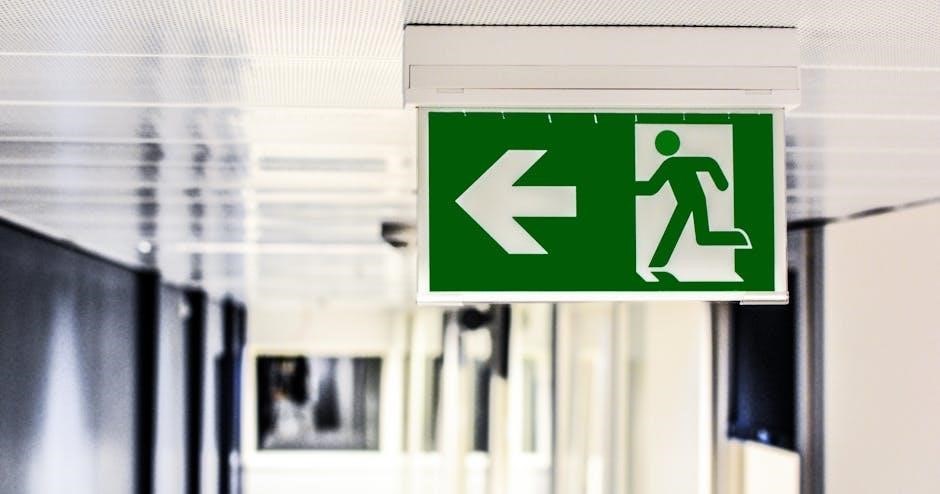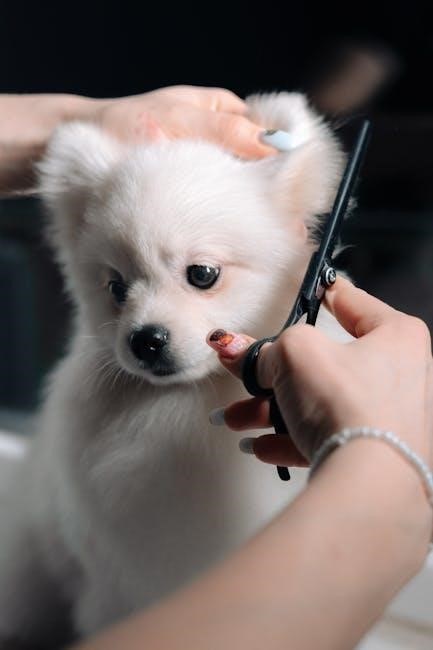Welcome to the ultimate guide on taper haircuts! This style, favored in barbershops, features gradually shorter hair towards the neck. We will explore various types, essential tools, and step-by-step instructions for achieving the perfect taper. Get ready to elevate your hairstyling skills!
What is a Taper Haircut?
A taper haircut involves a gradual change in hair length, typically shorter at the edges and longer on top. Unlike a fade, which often blends down to the skin, a taper maintains some length throughout. The hair gradually transitions, creating a neat and stylish look. Tapers are versatile and can be adapted to various hair types and lengths.
The essence of a taper lies in its subtlety. It’s about creating a smooth, seamless transition. This can be achieved using scissors, clippers, or a combination of both. Barbers often use the “scissor over comb” technique to meticulously sculpt the hair. This involves using a comb to lift the hair while carefully trimming with scissors, ensuring a consistent and even taper.
Taper haircuts are popular because they are easy to maintain and always look great. They are a classic choice that never goes out of style. Whether you prefer a subtle, low taper or a more dramatic, high taper, the possibilities are endless. The key is to find a style that complements your face shape and personal preference.
Taper vs. Fade: Understanding the Difference
While often used interchangeably, “taper” and “fade” refer to distinct haircutting techniques. A taper involves a gradual change in hair length, becoming shorter towards the edges, while maintaining some hair. It’s a subtle transition, offering a classic, refined appearance. The hair length gradually increases as you move up the head.
In contrast, a fade is a more dramatic taper that blends the hair down to the skin. Fades typically start with very short hair at the hairline and gradually increase in length. Fades are often categorized by their starting point, such as low, mid, or high fades, indicating where the shortest length begins on the head.
The key difference lies in the degree of hair removal. A taper leaves more hair, offering a softer, more blended look, while a fade is more aggressive, creating a sharper, more defined contrast. Understanding these nuances is crucial for communicating your desired style to your barber. Choosing between a taper and a fade depends on your preference for subtlety versus boldness.
Different Types of Taper Haircuts
Taper haircuts are versatile and come in several variations, each offering a unique aesthetic. The low taper starts the taper just above the ear and neckline, providing a subtle and professional look. It’s easy to maintain and blends seamlessly with longer hairstyles on top. The mid taper begins slightly higher, around the middle of the head, creating a more noticeable transition. This is a popular choice for those seeking a balance between classic and modern styles.
For a bolder statement, the high taper starts near the top of the head, offering a dramatic contrast between the short sides and the longer top. This style is often paired with textured or voluminous hair on top. The taper fade is a variation where the hair fades down to the skin, creating a sharp and clean look. It can be combined with any of the low, mid, or high taper starting points.
Finally, the scissored taper involves using scissors instead of clippers to create the taper, resulting in a softer, more natural blend. This technique requires skill and precision but offers a more refined finish.
Essential Tools for a Taper Haircut
Achieving a perfect taper haircut requires the right tools. First and foremost, a high-quality set of clippers is essential. Look for clippers with adjustable blades and a powerful motor for smooth and consistent cuts. A variety of clipper guards, ranging from 1/16 inch to 1 inch, will allow you to create the gradual length transitions characteristic of a taper.
A trimmer, also known as an outliner, is crucial for creating clean lines around the hairline and sideburns. A barber comb, both fine-toothed and wide-toothed, is necessary for guiding the clippers and scissors, ensuring even cuts and blends.
For scissor-over-comb techniques, a good pair of haircutting scissors is vital. Choose scissors with sharp blades and a comfortable grip. A spray bottle filled with water will help keep the hair damp and manageable during the cutting process. Finally, a mirror is essential for checking your progress and ensuring symmetry. Consider using a handheld mirror in addition to a wall-mounted one for a 360-degree view.
Step-by-Step Guide to a Basic Taper Haircut
Embarking on your first taper haircut? Start with clean, slightly damp hair. Begin by selecting the desired clipper guard for the top of the head – typically a #3 or #4. Clip the entire top section, ensuring a uniform length. Next, determine the taper’s starting point. Use clippers with a guard #2 to create a guideline around the head’s perimeter.
Below this line, switch to a #1 guard and create another guideline, blending it slightly with the previous one. Now, using a #0 or no-guard setting, carefully trim the hair closest to the hairline. The key to a seamless taper lies in blending these sections. Employ the clipper-over-comb technique to soften the transitions between each guard length.
Use the trimmer to refine the edges around the ears and neckline. Regularly check your work in the mirror, ensuring symmetry and a smooth fade. Finish by styling the hair as desired, using product if needed. Remember, practice makes perfect, so don’t be discouraged if your first attempt isn’t flawless.

Using Clippers for Tapering
Clippers are indispensable for achieving a precise taper. Selecting the right clippers is crucial; look for models with adjustable blades and a variety of guard sizes. Before beginning, ensure your clippers are clean and well-oiled for optimal performance. Start by sectioning the hair and determining the desired length for the top. Use a longer guard, like a #4, for a more conservative length.
As you move towards the sides and back, gradually decrease the guard size to create the taper effect. The key is to blend each section seamlessly. Use a flicking motion as you reach the end of each stroke to avoid creating harsh lines. For the shortest section of the taper, often near the neckline, use a trimmer or clippers with no guard.
Remember to move the clippers against the grain of the hair for a cleaner cut. Regularly check your progress in a mirror, ensuring symmetry and a smooth transition between lengths. Practice and patience are key to mastering the art of tapering with clippers.
Scissor Over Comb Technique for Tapering
The scissor over comb technique is a refined method for achieving a soft, blended taper. This technique involves using a comb to lift the hair away from the head while simultaneously cutting the hair that extends beyond the comb with scissors. It demands precision and control, but yields a very natural finish.

Start by holding the comb at a slight angle to the head, creating the desired slope for the taper. Use the comb to gently lift the hair, and with your scissors, carefully trim the hair that protrudes beyond the comb’s teeth. It is essential to keep the scissors moving in a fluid motion, following the curve of the head to create a smooth transition.
The angle at which you hold the comb determines the steepness of the taper. Practice this technique on a mannequin or a willing friend before attempting it on yourself. Remember, the goal is to gradually shorten the hair, creating a seamless blend between the different lengths. With patience and practice, you can master this technique.
Creating a Low Taper Fade
A low taper fade is a subtle and versatile haircut, ideal for those seeking a refined and professional look. This style features a taper that begins low on the head, typically around the sideburns and nape of the neck, gradually blending into the longer hair on top. The key to a successful low taper fade lies in the smooth transition between lengths.

To achieve this look, start by sectioning off the hair above where you want the taper to begin. Using clippers with various guard sizes, gradually fade the hair from short to long. Begin with a shorter guard at the very bottom, and then move to progressively longer guards as you move upwards, creating a seamless blend;
Pay close attention to detail, ensuring that there are no harsh lines or abrupt transitions. Use a trimmer to create a clean baseline around the edges of the hairline. The result is a clean, modern, and easy-to-maintain haircut that is suitable for any occasion.
Maintaining Your Taper Haircut
Maintaining a taper haircut requires consistent care to keep it looking sharp and fresh. Regular trims are essential, typically every two to three weeks, to prevent the taper from growing out and losing its defined shape. Invest in quality clippers for touch-ups between barber visits, focusing on the neckline and sideburns to maintain clean lines.
Washing your hair two to three times a week helps prevent product buildup and keeps the hair healthy. Use a shampoo and conditioner suitable for your hair type to maintain moisture and prevent dryness. Styling products, such as pomade or wax, can enhance the texture and hold of your taper, but use them sparingly to avoid buildup.
Regularly comb or brush your hair to keep it neat and styled. When sleeping, consider using a silk or satin pillowcase to reduce friction and prevent frizz. With proper care and attention, your taper haircut will remain a stylish and well-groomed statement.
Common Mistakes to Avoid When Tapering
When attempting a taper haircut, several common mistakes can hinder the final result. One frequent error is rushing the process, which often leads to uneven lines and inconsistent lengths. Taking your time and working meticulously is crucial for achieving a smooth and balanced taper.
Another mistake is using dull or inadequate clippers. Sharp, high-quality clippers are essential for clean cuts and precise fading; Neglecting to properly section the hair before starting can also lead to uneven tapering. Divide the hair into manageable sections to ensure each area receives the appropriate attention.
Failing to blend the different lengths seamlessly is another pitfall. Use various clipper guards and blending techniques to create a gradual transition between lengths. Avoid creating harsh lines by overlapping each guard length slightly. Lastly, neglecting to check the symmetry can result in an unbalanced taper. Regularly assess the haircut from multiple angles to ensure evenness on both sides.
Inspiration and Examples of Taper Haircuts
Looking for inspiration for your next taper haircut? The possibilities are endless! A classic low taper offers a subtle and professional look, perfect for any setting. For a bolder statement, consider a high taper fade, which dramatically shortens the hair on the sides and back, drawing attention to the hair on top.

The temple fade, a type of taper that focuses on the temples, provides a modern and stylish edge. Textured crops with a tapered neckline are popular for adding volume and movement. For those with longer hair on top, a taper can create a clean and defined silhouette.
Consider a scissor taper for a softer, more natural look. Explore different part styles to complement your taper, such as a side part, middle part, or even a textured quiff. Ultimately, the best taper haircut is the one that suits your personal style and hair type. Experiment and find the perfect taper to elevate your look!

Be First to Comment